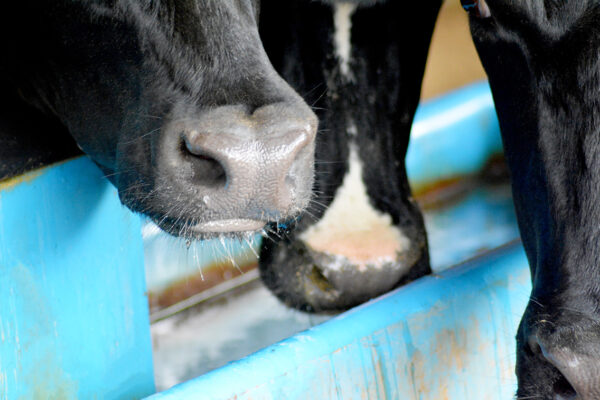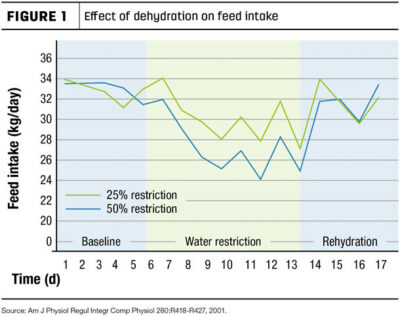Why water absorption matters
By Nathan Upah
Just as the old phrase states, “You can lead a horse to water, but you can’t make it drink.” We handle our cows much in the same way, “Here’s the water, and there’s plenty of it, so drink.” However, dairy cow hydration isn’t just about drinking enough water. The full benefits come with proper absorption.
We don’t monitor water consumption or drinking frequency as we do activity or rumination. We assume the cow will drink at some point. Why do we need to encourage water intake? She’s going to drink every day. Aside from increasing the salt content of the diet, how would we encourage her to make more trips to the waterer anyway?

There are five critical times to encourage water intake:
-
In the return lane
-
In the fresh pen
-
Immediately after calving
-
During heat stress
-
In the hospital pen
While intake is the first step, the true benefits of adequate water consumption are realized in the cow’s ability to absorb it. This crucial step is largely taken for granted, likely due to the fact many of us believe ingestion of water is the same as absorption, both simple and immediate. While our thirst may be quenched, the water is doing little to affect hydration status other than wetting tongues until it reaches the small intestine. Water and nutrient absorption can further be influenced by dietary status. In a review of literature, intestinal transport and nutrient absorption was examined during periods of fasting and malnutrition. During these periods, the barrier function of the intestinal tract becomes hindered, allowing for a greater uptake of nutrients from the intestinal lumen. Ferraris and Carey suggested the act of opening the gut, or allowing it to become leaky and permeable, could be a survival mechanism employed by the body to uptake essential nutrients such as amino acids during periods of feed restriction.
Water is the most critical compound to sustaining life. The leaky nature of the gut during periods of nutrient disruption allows for enhanced uptake of essential nutrients, but what could be more sensitive than water? While this may sound like an efficient mechanism to gain access to hydration and nutrition, there are major costs in increasing gut permeability. As one can imagine, with the gut acting as a passageway rather than a filter, more unwanted microorganisms can enter the blood stream. This infiltration of bacteria then activates the immune system. Immunoactivation causes fever and edema, and results in the partitioning of nutrients away from production and instead utilizes nutrients to support noneconomically beneficial requirements. Could leaky gut be the result of poor hydration status? Could electrolyte therapies be utilized to maintain intestinal integrity and keep animals drinking, eating and producing?
Consider the times we observe an endotoxin challenge on a dairy, at calving, before calving, during heat stress, pen movements, toxic mastitis, even physiological stress and probably more instances that have yet to be classified. The common link associated with those times is depressed dry matter intake (see Figure 1). When dry matter intake is depressed, it is extremely likely water intake is simultaneously subpar. Heat stress is an exception because water intakes commonly are elevated, but we know the cow is also sweating, panting and has massively upregulated her efforts to employ evaporative cooling mechanisms.

Farm management has typically not incentivized the “horse” to drink because it has been assumed animals will self-regulate. Furthermore, the link to water intake and animal health has been buried deep in the layers of interactions and metabolic reactions. But the layers are starting to peel back, and as our knowledge of water transport grows, we’ve learned we can profoundly affect mortality and impact metabolism. We’ve learned that volume is not everything; rather, how effectively the water is utilized matters equally, if not to a greater degree.
Water is very powerful; it cut the Grand Canyon, powers cities and gives life to ecosystems. When we can harness that power and channel it, we can intensely impact natural biology and thereby affect the health and well-being of our production animals.
Article first published on Progressive Dairy. Read it here.
